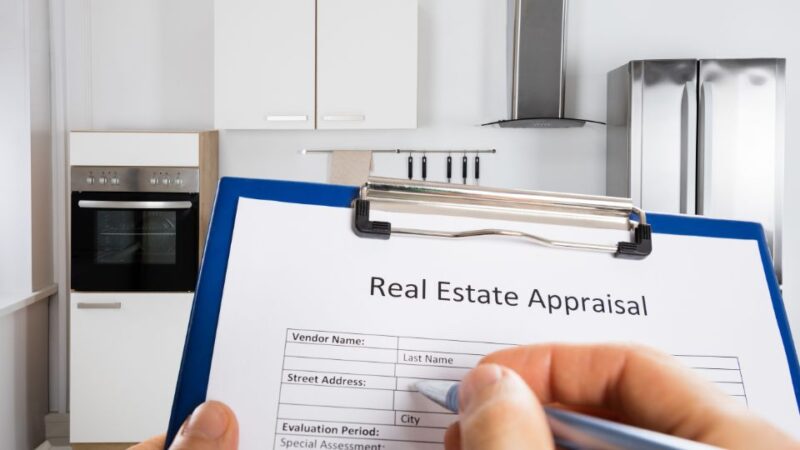Zillow, the popular online real estate marketplace, provides estimated home values for millions of properties across the United States. These estimates, known as Zestimates, are calculated using a proprietary algorithm that takes into account a variety of factors, including recent sales, property characteristics, and local market trends. While Zillow estimates can be a useful starting point for homeowners and homebuyers, they often differ from the appraised value of a property.

Appraisals, on the other hand, are conducted by licensed professionals and provide a more accurate assessment of a property’s value. Appraisers consider many of the same factors as Zillow’s algorithm, but also take into account the condition of the property, any recent renovations or upgrades, and other factors that may affect its value. Despite this, Zestimates and appraisals can vary significantly, leaving homeowners and buyers wondering why.
Understanding why Zillow estimates differ from appraisal values is important for anyone looking to buy or sell a home. Factors such as the purpose of the appraisal, the type of property being appraised, and the methodology used by Zillow’s algorithm can all contribute to discrepancies between the two valuations. By exploring these factors, homeowners and buyers can gain a better understanding of how to interpret Zestimates and appraisals, and make more informed decisions when it comes to buying or selling a home.
Key Takeaways
- Zillow estimates and appraisals often differ due to differences in methodology and purpose.
- Zestimates are a useful starting point, but appraisals provide a more accurate assessment of a property’s value.
- Understanding the factors that contribute to discrepancies between Zestimates and appraisals can help homeowners and buyers make more informed decisions.
Understanding Zillow Estimates

Zillow is a popular online real estate marketplace that offers a wide range of services to homebuyers, sellers, and renters. One of its most popular features is the Zillow Estimate or Zestimate, which is an automated valuation model (AVM) that estimates the value of a property based on a variety of factors. Here are some key points to consider when understanding Zillow Estimates.
Zillow’s Zestimate Algorithm
Zillow’s Zestimate algorithm uses a variety of data sources to estimate the value of a property. This includes public records, tax assessments, and user-submitted data. The algorithm takes into account factors such as the property’s location, size, age, and recent sales in the area. Zillow also uses machine learning to improve the accuracy of its estimates over time.
Data Sources for Zestimates
Zillow’s Zestimates are based on a variety of data sources, including public records, tax assessments, and user-submitted data. Public records include information such as property sales, property tax assessments, and building permits. Tax assessments provide information on the value of a property for tax purposes. User-submitted data includes information such as the number of bedrooms and bathrooms, square footage, and other features of the property.
Frequency of Zestimate Updates
Zillow updates its Zestimates on a daily basis for most properties. However, the frequency of updates may vary depending on the availability of data for a particular property. Zillow also provides a “Zestimate history” for each property, which allows users to see how the Zestimate has changed over time.
In summary, Zillow Estimates are a useful tool for estimating the value of a property. However, it’s important to keep in mind that they are not a substitute for a professional appraisal. Zillow’s Zestimate algorithm uses a variety of data sources to estimate the value of a property, and the frequency of updates may vary depending on the availability of data.
Appraisal Process and Purpose

Steps in the Appraisal Process
The appraisal process involves several steps that are designed to determine the value of a property. The first step is the inspection of the property, where the appraiser visits the property and takes note of its features, condition, and location. The appraiser then researches the local real estate market to determine the value of similar properties in the area.
The appraiser then analyzes the data collected and applies various methods to determine the property’s value. The appraiser considers the property’s location, condition, size, and other features, as well as market trends and economic conditions.
Appraiser Qualifications
Appraisers are licensed professionals who have undergone extensive training and education to become qualified to appraise properties. They must have a thorough understanding of real estate markets, property valuation methods, and legal requirements.
To become a licensed appraiser, an individual must complete a state-approved education program, pass an exam, and complete a certain number of hours of on-the-job training. Appraisers must also adhere to ethical standards set by professional organizations and state licensing boards.
Appraisal as a Legal Document
An appraisal is a legal document that provides an unbiased estimate of a property’s value. It is often used in real estate transactions to determine the fair market value of a property. Appraisals are also used in legal proceedings, such as divorce settlements and estate planning.
Appraisals are important because they provide an objective estimate of a property’s value. This helps buyers and sellers make informed decisions about real estate transactions and can also help ensure that property owners receive fair compensation in legal proceedings.
Related: The Top 10 Types of Home Loans
Factors Causing Discrepancies
Market Volatility
One of the primary factors causing discrepancies between Zillow estimates and appraisal values is market volatility. Real estate markets are subject to constant fluctuations, and Zillow estimates may not always reflect the most recent changes in local market conditions. Additionally, Zillow’s estimates are based on historical data, which may not fully capture the current state of the market.
Information Asymmetry
Another factor that can cause discrepancies between Zillow estimates and appraisal values is information asymmetry. Zillow’s estimates are based on publicly available data, such as tax records and MLS listings, which may not always be accurate or up-to-date. In contrast, appraisers have access to more detailed information about the property, such as recent renovations or repairs, that may not be reflected in Zillow’s estimates.
Physical Property Changes
Finally, physical changes to the property can also cause discrepancies between Zillow estimates and appraisal values. Zillow’s estimates are based on a variety of factors, including the size and condition of the property, but they may not always reflect recent changes to the property, such as renovations or additions. Additionally, Zillow’s estimates may not fully capture the unique features of a property that can affect its value, such as a spectacular view or a prime location.
Market volatility, information asymmetry, and physical property changes are all factors that can contribute to discrepancies between Zillow estimates and appraisal values. While Zillow estimates can be a useful tool for getting a rough idea of a property’s value, they should not be relied upon as a substitute for a professional appraisal.
Implications of Different Valuations
When Zillow estimates and appraisal values differ, it can have significant implications for real estate transactions, buyer and seller decisions, and property tax assessments.
Impact on Real Estate Transactions
Zillow estimates and appraisal values are both used to determine the value of a property, but they can often produce different results. This can create challenges in real estate transactions, particularly when buyers and sellers have different expectations about the value of the property. If the Zillow estimate is significantly higher than the appraisal value, buyers may be hesitant to make an offer, while sellers may be reluctant to lower their asking price. Conversely, if the Zillow estimate is lower than the appraisal value, buyers may be more willing to make an offer, while sellers may be more willing to negotiate on price.
Influence on Buyer and Seller Decisions
The difference between Zillow estimates and appraisal values can also influence the decisions of buyers and sellers. Buyers who rely on Zillow estimates may be more likely to make an offer that is above the appraisal value, which can create challenges in financing the purchase. Similarly, sellers who rely on Zillow estimates may be more likely to set an asking price that is above the appraisal value, which can make it difficult to attract buyers.
Related: Boomer Housing’s Surging Wave: 9 Million Homes Incoming
Related: 2024 Foreclosure Trends Increase, But Refinances Gain
Effect on Property Tax Assessments
Zillow estimates can also have an impact on property tax assessments. In some cases, local tax assessors may use Zillow estimates to determine the value of a property for tax purposes. If the Zillow estimate is significantly higher than the appraisal value, property owners may end up paying more in property taxes than they should. Conversely, if the Zillow estimate is lower than the appraisal value, property owners may end up paying less in property taxes than they should.
Overall, the difference between Zillow estimates and appraisal values can have significant implications for real estate transactions, buyer and seller decisions, and property tax assessments. It is important for buyers, sellers, and property owners to be aware of these differences and to use multiple sources of information when determining the value of a property.





